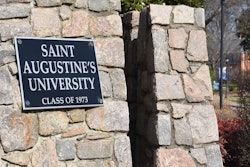The Secrets of St. Agnes
By Janell Ross
A retired biology professor uncovers disturbing truths about the past practices of a North Carolina hospital.
Sometimes the best questions, the ones that reveal new truths, are posed outside of the classroom. In the 1990s, Irene Clark was a biology professor at St. Augustine’s College, a historically Black college in Raleigh, N.C. One day, a janitor asked the native Virginian what she knew about the crumbling, windowless stone building at the edge of campus.
“Little did I know where that conversation would lead,” says Clark, who is now retired.
The crumbling building was St. Agnes Hospital, a place once regarded as the best medical facility for Blacks between Hampton, Va., and New Orleans. This was the place where hundreds of Black women learned to be nurses and thousands of Black babies were born. It was a hospital where some of the area’s best-known doctors — Black and White, male and female — got their start. And it was the place where Black boxer Jack Johnson was declared dead.
But the hospital also played a role in the sterilization of thousands of poor and mentally ill patients, as well as other people the state of North Carolina considered socially undesirable, as a darker piece of the famed hospital’s history revealed this year.
Clark found the basis for the latest chapter in her unpublished manuscript about St. Agnes — in the records of the Eugenics Board of North Carolina.
“… [Negro], inmate Franklin County Home … 30 years of age,” one record read. “[Name redacted] … is promiscuous with any man who will carry on with her, the father of her unborn baby being the son of her former landlord. She would leave her children at night … not caring for her children in any way …
“Diagnosis: Feebleminded. Operation will be performed by surgeon on staff at St. Agnes Hospital …”
The records proved that St. Agnes and its staff were active participants in North Carolina’s eugenics program — a program that led to the sterilization of at least 7,600 people between 1929 and 1973.
Founded in 1896, St. Agnes Hospital both challenged the social hierarchy and reinforced it. The hospital gave Black male and White female physicians a place to practice long before other area institutions. But nurses were instructed not to use the terms “Mr.” or “Mrs.” when addressing Black patients. Despite the social gymnastics, St. Agnes’ doctors and nurses provided care for Raleigh’s Black population, whether indigent or affluent, until the hospital closed in 1961.
Clark was thrilled to learn such a hospital had existed. But her research took an unexpected turn nearly a decade ago when she happened upon a reference to sterilizations in a book by the late Dr. Hubert A. Royster, St. Agnes’ chief of staff for more than 50 years. A member of a prominent family, Royster was the state’s first surgeon and dean of a state medical school. In his book, Royster said he performed sterilizations on mentally ill and disabled patients at State Hospital. If Royster sterilized these patients, Clark wondered, were sterilizations also performed at St. Agnes?
For answers, Clark turned to Lisa H. Towle, who was writing a medical history of the region.
“She said to me, ‘Don’t go there,’” Clark recalls. “This is what her editors had told her.”
While researching her book, Towle had uncovered information about possible eugenic sterilizations at area hospitals. But, when she told her editors she would need more time to chase down the truth, her publisher decided to omit the entire topic.
Eugenics was a popular concept in the early part of the 20th century. Advocates believed that the human gene pool could be improved with science, says Dr. Paul A. Lombardo, director of The Program in Law and Medicine at the University of Virginia’s Center for Biomedical Ethics.
Traits regarded as undesirable and hereditary included not only physical and mental disabilities such as retardation, epilepsy and blindness but also poverty and promiscuity. Eugenic ideology appeared in popular magazines, in movies and even in letters to newspaper editors. Most of the focus, Lombardo says, was on “improving” the White population. Blacks were regarded as a “degenerate race” bound for extinction.
Modern laws and social views have made it nearly unthinkable to uniformly limit the reproductive rights of people with disabilities or diseases. But in 1910, eugenics-inspired policies were on the books in nearly 30 states. In 1929, North Carolina passed a law allowing state-mandated sterilization. The Eugenics Board of North Carolina was created to evaluate and approve the sterilization of the “mentally diseased, feebleminded or epileptic.”
“Petitions” for sterilization came from doctors, public health officials and, unlike any other state, social workers. Few were denied, says Dr. Johanna Schoen, a University of Iowa historian. As a graduate student at UNC-Chapel Hill in the late 1980s and early 1990s, Schoen researched North Carolina women’s access to birth control. She is the only person in at least three decades given access to the Eugenics Board’s records.
The records, housed at the North Carolina State Archives, are restricted. They include the names of people sterilized and details of their private lives.
Schoen, claiming a legitimate scholarly interest, appealed for access to the records. After an initial denial, the state Attorney General’s office issued a short-lived opinion in her favor. A state archives employee put a roll of microfilm in Schoen’s hand and told her to look at it right away.
According to those records, the majority of sterilizations were performed on the poor. More than 80 percent were women, and in the later half of the program, a disproportionate share were Black. The information became the basis for sections of Schoen’s book, Choice and Coercion, and a 2002 series in the Winston-Salem Journal. The Journal series prompted North Carolina Gov. Mike Easley to offer a public apology to the sterilization victims. But neither the book nor the newspaper series mentioned St. Agnes.
During her research, Clark read the Journal’s series. She found Eugenics Board forms indicating that blindness, poverty and promiscuity could help form the basis for a sterilization order. Knowing what she did about Royster’s work and stereotypes about Black sexuality and intelligence, Clark grew more suspicious. Had Royster or others sterilized patients at St. Agnes?
Her attempts to gain access to Eugenics Board records were refused. But Clark, who her husband sometimes refers to as “the detective,” was undaunted. She contacted Schoen. In January, Schoen’s research assistant sent Clark an envelope marked “handle with care.”
The page that made Clark stop — detailing the board’s decision to sterilize a 30-year old “feebleminded” woman at St. Agnes — was from the Eugenics Board’s June 1949 meeting. As far as Clark could tell, it was the earliest mention of St. Agnes in the records. And it was proof that Raleigh’s Black hospital played a role in the sterilization program.
The records covered 27 years and indicated that at least 11 sterilizations were performed at St. Agnes. The operating physicians were unnamed in most cases. Doctors were paid a nominal fee.
One of the patients ordered sterilized at St. Agnes was a pregnant 12-year-old girl. Her baby was to be put up for adoption.
A 22-year-old single mother of three was sterilized after a social worker and doctor found that she had “inadequate control of [her] sexual behavior.”
The records Clark obtained also revealed that Royster, the late Dr. Annie Louise Wilkerson and 10 others performed at least 248 sterilizations and asexualizations (removal of the testicles or ovaries) at other area hospitals. St. Agnes staff physician Dr. L.C. Liles performed more than 100 such operations.
On at least three occasions, Wilkerson and her sister, social worker Josephine Wilkerson Kirk, worked together to recommend sterilizations at St. Agnes.
Wilkerson, who died in September, was a Raleigh legend. She was the first woman to intern at one of Raleigh’s early White hospitals. She delivered more than 8,000 babies during a 53-year career. Kirk, who died in 1976, led the area’s Social Services Department for more than 30 years.
The number of actual sterilizations at St. Agnes was small in comparison to other North Carolina hospitals. But its participation coincides with a gradual but significant change in the program. Between June 1929 and June 1948, 1,576 White residents and 494 Blacks were sterilized, according to the board’s reports. But by 1959, more Blacks (162) than Whites (119) were sterilized. That same pattern grew more pronounced and continued until the program ended in 1973.
Most of the doctors mentioned in the documents had long since died when Clark began to learn their names. But two — Wilkerson and Thomas — were still alive. Last year, after learning that Wilkerson was suffering from a serious illness, Clark decided to contact her. About two months before Wilkerson’s death, Clark called the ailing former OB/GYN.
“She just said, ‘We did that, but it was legal.’” Clark says. “She really wouldn’t go too far beyond that. Of course, I told her it was also legal at one time for me to have to sit at the back of the bus.”
Wilkerson’s nephew, Charles Wilkerson Jr. says that while his “Aunt Annie,” did not often reflect on her work, she had mentioned the eugenics program.
“As Annie said, ‘God love us, you do the best you can,’” Charles Wilkerson says about his aunt. “All of these people, these
doctors and my aunt[s] Annie and Josephine, were the best intentioned people … The great blessing we all have now is that science has continued to advance.”
Clark also spoke with Thomas, 81. He denied any knowledge of the program. Before his death on June 17, Thomas gave one last interview about the eugenics program.
“To tell you the truth, during the years that I was there I
don’t recall any sterilization,” he said when contacted by a reporter. “I don’t recall anything of that nature even being whispered about.”
Eugenics Board documents, however, indicate that Thomas performed the medical evaluation required for the sterilization of a severely retarded 19-year-old woman in 1959. When asked about the contradiction, Thomas said the program reflected, “an ignorance about the value of every human life and its potential.”
When Thomas first began practicing, he said, little was known about heredity or the abilities of the disabled. Then, he hung up the phone.
After the hospital closed in 1961, Thomas ran a private practice in Durham for more than 30 years. And he left his thumbprint on the area’s HBCUs — teaching chemistry at Raleigh’s Shaw University, acting as campus physician at Durham’s North Carolina Central University and leading biology courses at St. Augustine’s College. It was there that Thomas and Clark crossed paths.
“He was a wonderful human being,” Clark says. “He was a consummate professional, always a joy, who also had this thing, this dark thing in his past.”
This year, St. Augustine has restarted an effort to restore the remains of the hospital. The project will likely be too expensive for the college to cover on its own. Clark is on the committee trying to raise the funds.
It may be hard for people to reconcile the legacies of St. Agnes and its physicians with the facts revealed by the Eugenics Board records, Clark says.
“I am sure there are going to be a lot of persons who feel one should never wake a sleeping dog.” Clark says. “But I would ask any person who is angered or upset by this information, what good is history if it’s really just happy, but incomplete myth?”
|
Reader comments on this story: |
|
There is currently 1 reader comment on this story: |
|
“a riveting story” |
© Copyright 2005 by DiverseEducation.com















